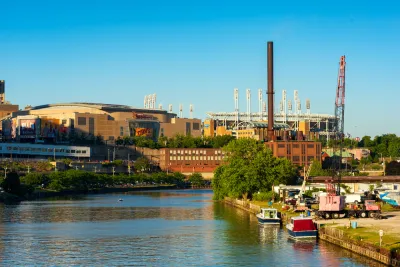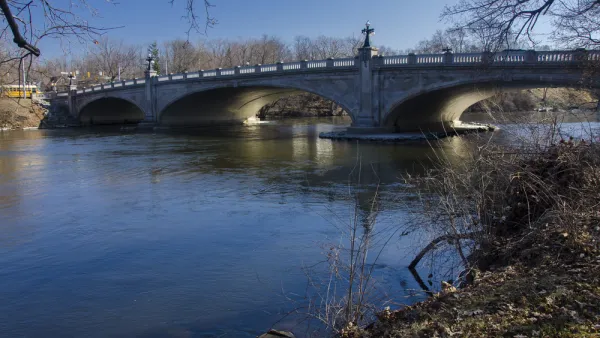A new report outlines seven strategies for balancing economic development and equity specifically aimed at smaller, post-industrial cities.

A Policy Focus Report from the Lincoln Institute of Land Policy outlines how "legacy cities"—post-industrial towns that have largely lost their traditional economic base—"can promote long-term growth while addressing racial and economic inequities laid bare by COVID-19." The report uses case studies to map out strategies guiding "practitioners through equitable investment in both physical projects and people."
As Emma Zehner writes, "[t]he report focuses on small to mid-size legacy cities with populations of 30,000 to 200,000 residents. Though they share many characteristics with their larger counterparts, these cities face unique challenges and require tailored approaches to revitalization." The seven strategies suggested in the report "are tailored to the unique challenges of these small to mid-size legacy cities and also draw on their unique opportunities—such as a lack of market pressures that allows leaders more time to get plans right." Some of the recommendations "build on existing programs—e.g., integrating racial equity analyses into routine local government decision-making—while others stand alone—e.g., programs that build the leadership pipeline and civic capacity of underrepresented groups."
The report's authors emphasize that equity does not have to come at the expense of economic development. In fact, "greater equity can both improve everyone’s access to opportunity and support the economic prospects of cities."
For a deeper dive on equitable economic development in legacy cities, see also the previous iteration of this report, published by the Lincoln Institute of Land Policy in 2017.
FULL STORY: Seven Strategies for Equitable Development in Smaller Legacy Cities

Analysis: Cybertruck Fatality Rate Far Exceeds That of Ford Pinto
The Tesla Cybertruck was recalled seven times last year.

National Parks Layoffs Will Cause Communities to Lose Billions
Thousands of essential park workers were laid off this week, just before the busy spring break season.

Retro-silient?: America’s First “Eco-burb,” The Woodlands Turns 50
A master-planned community north of Houston offers lessons on green infrastructure and resilient design, but falls short of its founder’s lofty affordability and walkability goals.

Test News Post 1
This is a summary

Analysis: Cybertruck Fatality Rate Far Exceeds That of Ford Pinto
The Tesla Cybertruck was recalled seven times last year.

Test News Headline 46
Test for the image on the front page.
Urban Design for Planners 1: Software Tools
This six-course series explores essential urban design concepts using open source software and equips planners with the tools they need to participate fully in the urban design process.
Planning for Universal Design
Learn the tools for implementing Universal Design in planning regulations.
EMC Planning Group, Inc.
Planetizen
Planetizen
Mpact (formerly Rail~Volution)
Great Falls Development Authority, Inc.
HUDs Office of Policy Development and Research
NYU Wagner Graduate School of Public Service




























